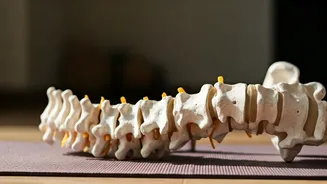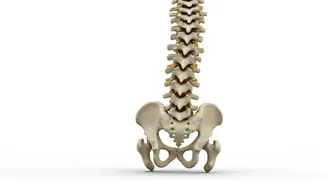Understanding Back Pain
Back pain, if left unaddressed, can create substantial hurdles in daily life. It can significantly restrict mobility, making routine tasks challenging
and hindering productivity at work or home. Furthermore, the persistent discomfort associated with back pain can negatively affect the overall quality of life, impacting mental well-being and social interactions. Therefore, recognizing the significance of back health is paramount. It is crucial to be proactive in addressing any signs of back pain to prevent its progression and the resulting limitations it may impose. Early intervention and the adoption of simple yet effective strategies can play a vital role in maintaining a healthy and functional back, enhancing overall well-being.
Exercise: Core Strengthening
Core strengthening exercises are pivotal in supporting and stabilizing the spine, thereby helping to alleviate back pain. One fundamental exercise is the plank. To perform a plank, begin by positioning yourself face down, resting on your forearms and toes, ensuring your body forms a straight line from head to heels. Maintain this position, engaging your core muscles to prevent your hips from sagging or your back from arching. Hold the plank for 30 seconds to start, gradually increasing the duration as your strength improves. Another effective exercise is the abdominal crunch, which involves lying on your back with knees bent and feet flat on the floor, then gently lifting your head and shoulders off the ground by engaging your abdominal muscles. Aim for controlled movements, avoiding straining your neck, and focus on contracting your core during the lift. Incorporate these exercises into your routine regularly for noticeable improvements in back support and pain reduction.
Exercise: Stretching Exercises
Stretching exercises are extremely beneficial in relieving back pain by improving flexibility and reducing muscle tension. The cat-cow stretch is a great example. Start on your hands and knees, with your hands directly beneath your shoulders and your knees under your hips. For the cat pose, round your spine toward the ceiling, tucking your chin to your chest and engaging your abdominal muscles. Then, for the cow pose, arch your back, dropping your belly towards the floor while lifting your head and tailbone. Repeat these movements in a rhythmic flow. Another effective stretch is the knee-to-chest stretch. Lie on your back with your knees bent and feet flat on the floor. Gently bring one knee towards your chest, holding it with your hands for about 30 seconds. Repeat with the other leg. These stretches help release tightness in the back muscles and promote improved spinal alignment, contributing to decreased pain and enhanced mobility.
Exercise: Spinal Stabilization
Spinal stabilization exercises play a crucial role in strengthening the muscles that support the spine, thus reducing the likelihood of back pain. One essential exercise is the bird dog. Begin on your hands and knees, ensuring your hands are directly beneath your shoulders and your knees under your hips. Extend one arm forward and the opposite leg backward, keeping your core engaged and your back straight. Hold this position for a few seconds before returning to the starting position and repeating on the other side. This exercise improves core stability and coordination, vital for spinal health. Another exercise is the pelvic tilt, which involves lying on your back with your knees bent and feet flat on the floor. Gently tilt your pelvis forward, flattening your lower back against the floor, and then tilt it backward, arching your lower back slightly. Focus on controlling the movement and engaging your abdominal muscles, practicing it regularly will make your back stronger.
Important Considerations
When performing these at-home back exercises, it is essential to prioritize proper form over the number of repetitions. Incorrect form can exacerbate back pain or lead to new injuries. It is therefore wise to start slowly and gradually increase the intensity and duration of your exercises as your strength improves. Before starting any new exercise routine, it is advisable to consult a healthcare professional, especially if you have pre-existing back conditions or experience severe pain. They can provide personalized advice and ensure that the exercises are suitable for your specific needs. Furthermore, listen to your body and take breaks when needed. If you experience any sharp or worsening pain during an exercise, stop immediately and seek medical attention. Regular, consistent practice of the right exercises, along with a healthy lifestyle, can significantly improve your back health and overall well-being.











